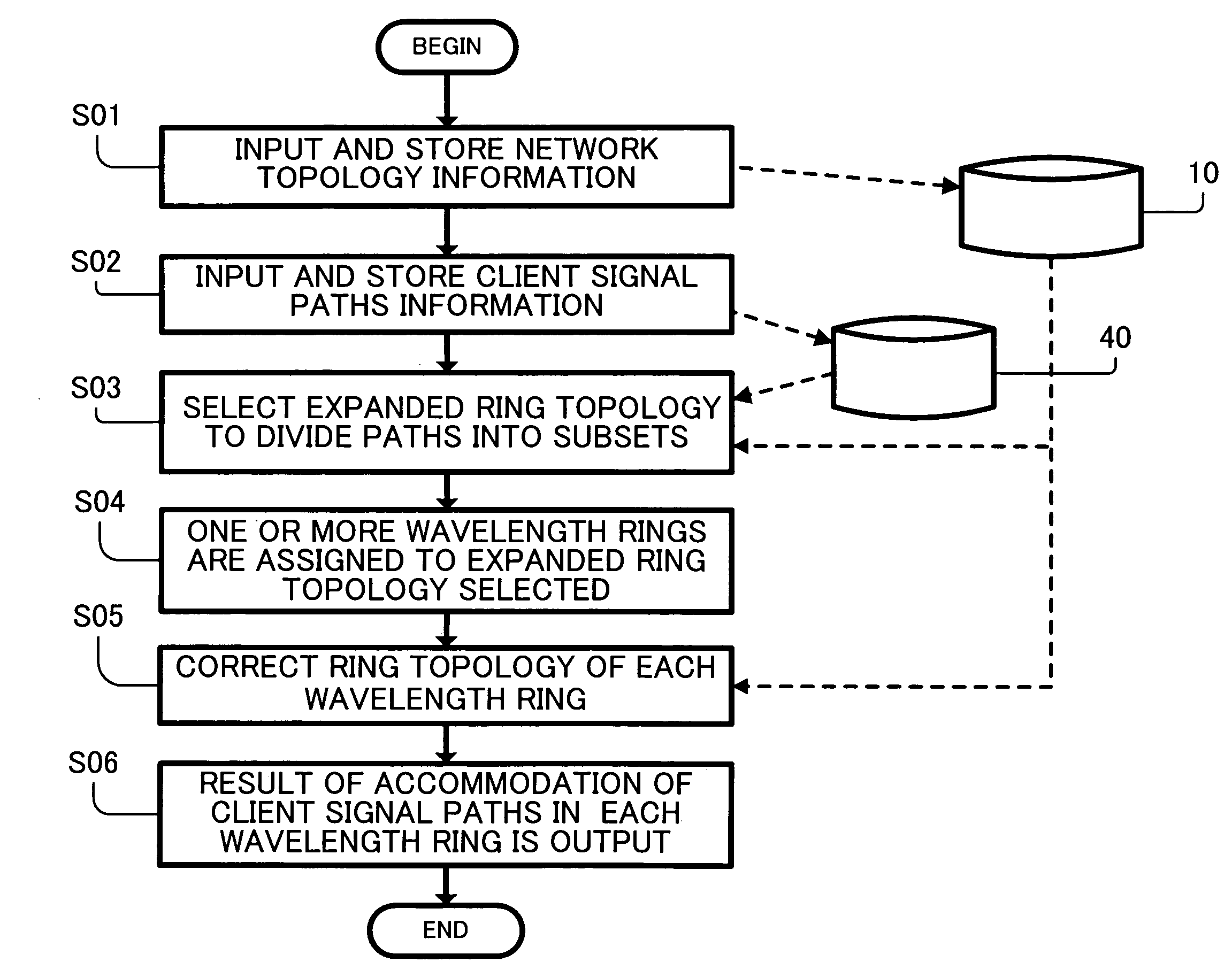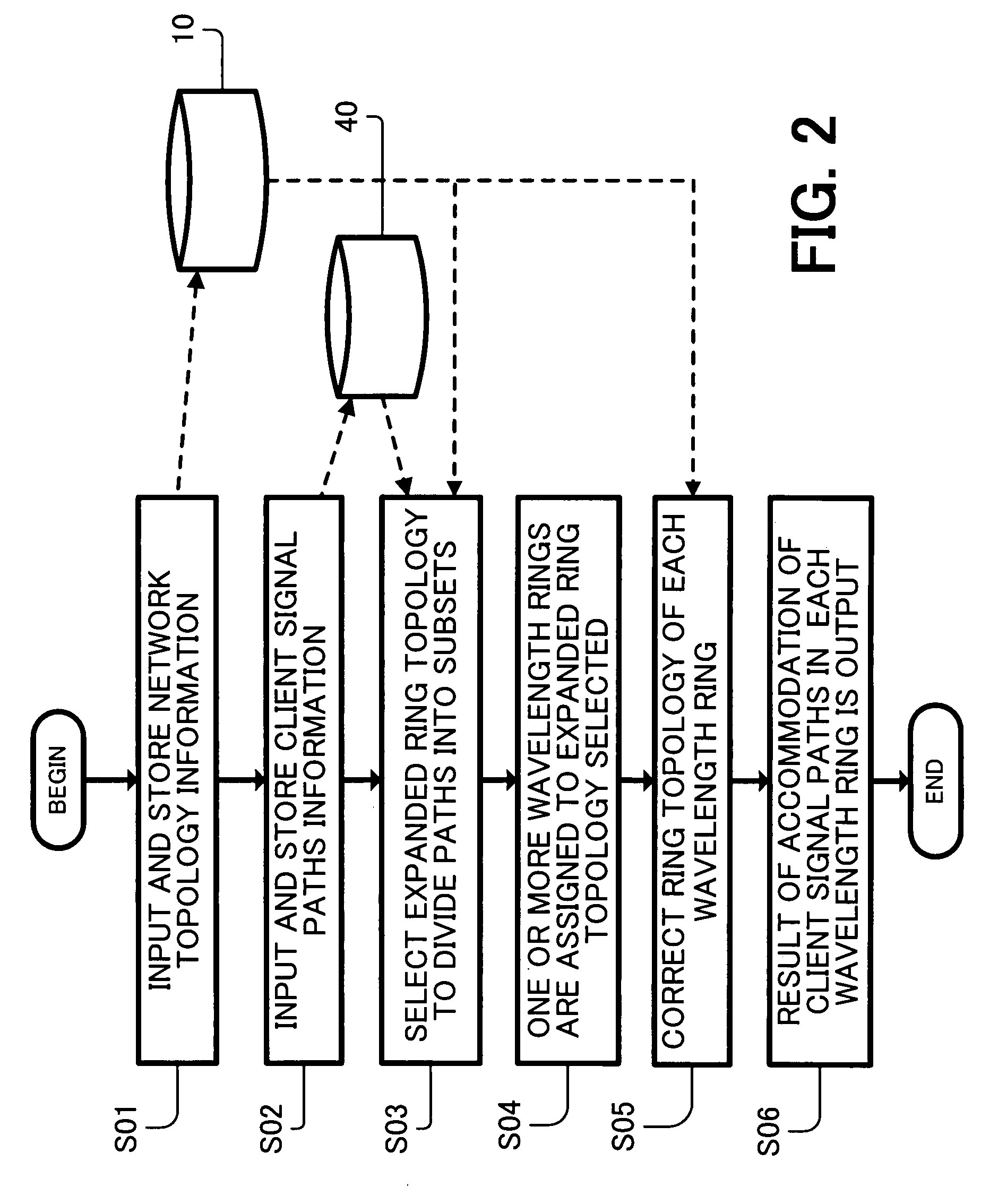Method for designing optical network, optical network, and computer readable medium
a technology of optical network and optical network, applied in the field of optical network design, can solve the problems of affecting the efficiency of designing, and requiring a lot of time, and achieve the effect of efficient accommodation of client signal paths
- Summary
- Abstract
- Description
- Claims
- Application Information
AI Technical Summary
Benefits of technology
Problems solved by technology
Method used
Image
Examples
first embodiment
[0097] Hereinafter, the present invention is described with reference to FIGS. 4 to 13 by using the first example of the network topology shown in FIG. 1 as a representative example.
[0098]FIG. 4 shows an example of a configuration of the client signal path information according to the present invention. In this example, a set of all client signal paths to be accommodated in the designed optical network is represented as a client signal path list 40 that can be easily processed in a computer. This list 40 serves as an embodiment of the client signal path information storing part 40 shown in FIG. 2.
[0099] Each client signal path information used to design accommodation in the optical network can includes identification information of a transmitting end node and a receiving end node of traffic (hereinafter referred to as end nodes) and a traffic volume between the end nodes. Herein, the traffic volume is represented by the product of a signal bandwidth and the number of traffic paths ...
second embodiment
[0188] Hereinafter, the present invention is described with reference to FIGS. 17 to 26 by using the second example of the network topology shown in FIG. 14 as a representative example.
[0189] In the second embodiment of the present invention, a predetermined cost is assigned to each communication link between adjoining nodes so that a ring path is searched for more efficiently on the basis of the cost information.
[0190]FIG. 17 shows an example of assignment of costs to communication links according to the present invention. In this example, distance information between nodes is assigned as a cost in kilometers to respective communication links between adjoining nodes in the network topology shown in FIG. 14. Herein, the communication links between the adjoining nodes are expressed by “L(node name, node name)”. For example, the communication link between adjoining nodes A and B is expressed by “L(A, B)”. The sum of the costs between the adjoining nodes passed by the path is defined ...
PUM
 Login to View More
Login to View More Abstract
Description
Claims
Application Information
 Login to View More
Login to View More - R&D
- Intellectual Property
- Life Sciences
- Materials
- Tech Scout
- Unparalleled Data Quality
- Higher Quality Content
- 60% Fewer Hallucinations
Browse by: Latest US Patents, China's latest patents, Technical Efficacy Thesaurus, Application Domain, Technology Topic, Popular Technical Reports.
© 2025 PatSnap. All rights reserved.Legal|Privacy policy|Modern Slavery Act Transparency Statement|Sitemap|About US| Contact US: help@patsnap.com



